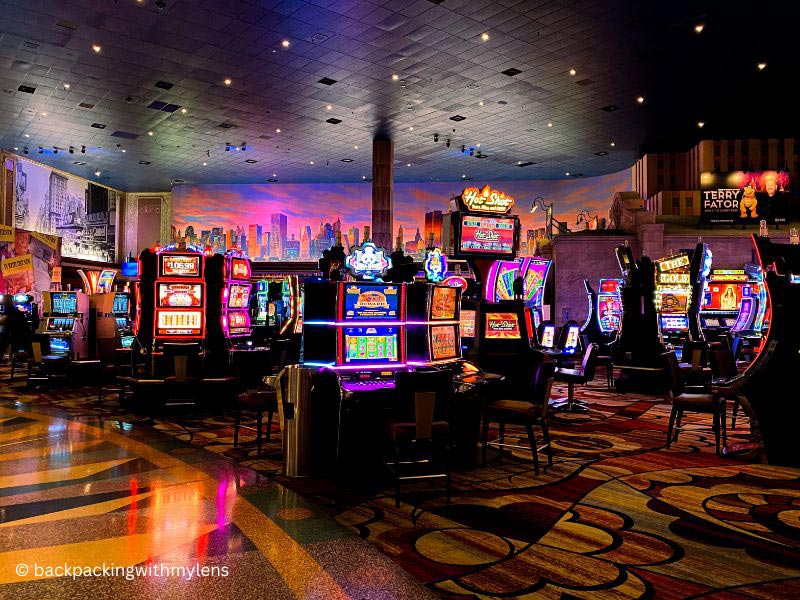Casino experiences have long captivated human interest, drawing gamblers into a realm filled with fortune, strategy, and the allure of excitement. Each game is painstakingly crafted not just for entertainment, but also to evoke particular emotional responses that keep participants engaged and committed. Understanding the reasons behind these designs reveals much about how behavioral psychology plays a key role in the gaming experience.

From the dazzling lights and vibrant sounds to the sophisticated layering of systems and payoffs, casino games are designed to create an atmosphere of thrill and expectation. Game designers leverage mental cues to influence gambler behavior, whether through the use of big prizes, near-miss scenarios, or social connections. OK9 By examining these elements, we can better appreciate how casino games fulfill not just a want for entertainment, but more profound psychological needs for adventure and risk.
Comprehending Player Actions
Casino games are designed with a deep grasp of player psychology, which is crucial for luring and retaining players. The rush of the game, alongside the hope of winning, creates a powerful allure. Game designers employ elements like sonic elements, dynamic graphics, and engaging gameplay to capture attention and elicit emotional responses. These sensory elements enhance the total environment, making players feel more invested in the game.
Another significant aspect of player behavior is the concept of risk and reward. Casino games often weigh high-stakes situations with the potential for considerable rewards, which can result in the occurrence known as near-miss experience. When players come within reach to winning, the brain releases dopamine, reinforcing their behavior and motivating them to persist playing in quest of that elusive win. This cycle of hope and frustration plays a key role in how games are structured and promoted.
Lastly, social factors also play a pivotal role in player behavior at casinos. Many games are crafted to be played in teams or in company with other players, creating a sense of community and shared experience. The interaction inherent in games like blackjack enhances enjoyment and can culminate in extended gameplay. Designers leverage on this by designing environments that prompt players to remain, connect, and revisit, making the overall casino experience more inviting.
The Role of Visuals and Sound
Imagery and sound play a significant role in improving the gambler’s experience within casino games. Designers utilize vibrant colors, eye-catching graphics, and engaging animations to attract gambler’s attention and hold their interest. The use of themes, such as adventure or opulence, helps create an engaging atmosphere that transports players into another world. By connecting to the senses, these elements contribute to a intensified emotional response, prompting players to interact more profoundly with the games.
Sound design is just as important in enhancing the overall experience of gambling games. The mix of ambient music, sound effects for winning combinations, and environmental noises creates an auditory landscape that keeps players enthralled. Audio cues associated with victories, such as ringing bells or festive music, evoke feelings of excitement and reward, encouraging players to continue playing. These sound cues are carefully placed to enhance the thrill of the game and create a more immersive experience.
Moreover, the alignment of imagery and audio is essential for reinforcing the game’s overall concept and atmosphere. Each element should coordinate seamlessly to create a unified experience that pulls players in. The effective use of this integration not only enhances user satisfaction but also increases the likelihood of repeat play, as players become more invested in the captivating world that the gambling games offer. This thoughtful combination of imagery and sound ultimately enhances player engagement and loyalty.
Reward Systems and Participation
The creation of gambling experiences heavily relies on incentive systems to ensure players involved and returning for more. These structures are based in behavioral principles that take advantage of human behavior and desire. Players are often motivated by the thrill of success, which is supported by immediate feedback through the game’s mechanics. This prompt satisfaction not just improves the overall experience but also cultivates a feeling of achievement, prompting participants to keep participating in hopes of bigger rewards.
Casinos implement various incentive systems, such as large payouts, bonuses, and multipliers, to captivate players. These elements create a layer of excitement that maintains engagement. Additionally, the randomness of outcomes plays a significant role in keeping interest. The variable reward system, where wins are unpredictable but occur often enough, maintains players on edge and motivated to continue participating. This loop of anticipation and expectation is essential to the success of casino games.
Furthermore, community aspects, such as tournaments and multiplayer features, boost the engagement factor by leveraging the desire to compete of participants. The communal aspect of playing with fellow participants can intensify the excitement of winning and create a community atmosphere within the gaming space. By combining these community elements with effective incentive structures, gambling experiences not only offer fun but also foster a stronger connection among participants, solidifying their loyalty to the gaming experience.